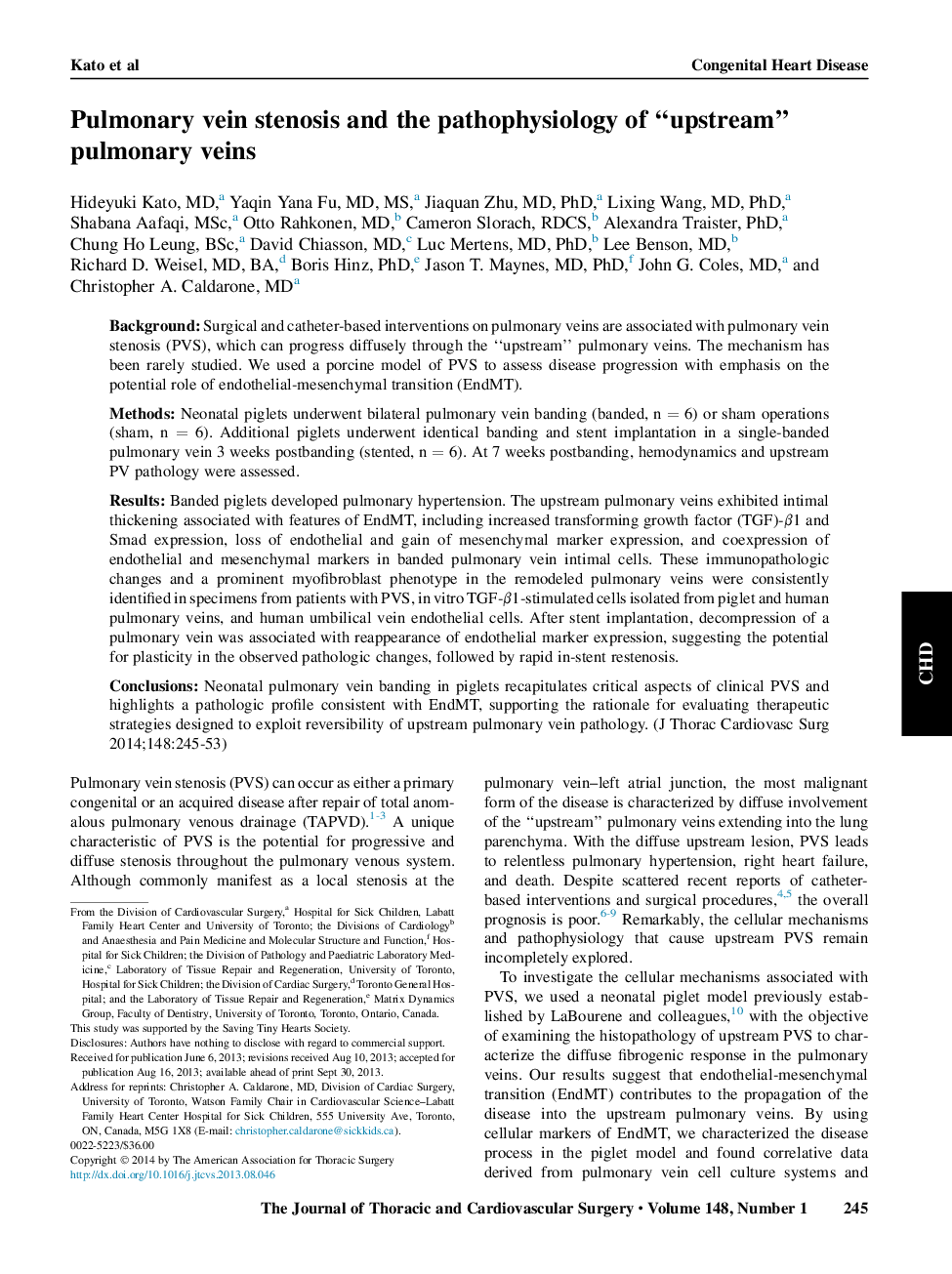| Article ID | Journal | Published Year | Pages | File Type |
|---|---|---|---|---|
| 2980773 | The Journal of Thoracic and Cardiovascular Surgery | 2014 | 9 Pages |
BackgroundSurgical and catheter-based interventions on pulmonary veins are associated with pulmonary vein stenosis (PVS), which can progress diffusely through the “upstream” pulmonary veins. The mechanism has been rarely studied. We used a porcine model of PVS to assess disease progression with emphasis on the potential role of endothelial-mesenchymal transition (EndMT).MethodsNeonatal piglets underwent bilateral pulmonary vein banding (banded, n = 6) or sham operations (sham, n = 6). Additional piglets underwent identical banding and stent implantation in a single-banded pulmonary vein 3 weeks postbanding (stented, n = 6). At 7 weeks postbanding, hemodynamics and upstream PV pathology were assessed.ResultsBanded piglets developed pulmonary hypertension. The upstream pulmonary veins exhibited intimal thickening associated with features of EndMT, including increased transforming growth factor (TGF)-β1 and Smad expression, loss of endothelial and gain of mesenchymal marker expression, and coexpression of endothelial and mesenchymal markers in banded pulmonary vein intimal cells. These immunopathologic changes and a prominent myofibroblast phenotype in the remodeled pulmonary veins were consistently identified in specimens from patients with PVS, in vitro TGF-β1-stimulated cells isolated from piglet and human pulmonary veins, and human umbilical vein endothelial cells. After stent implantation, decompression of a pulmonary vein was associated with reappearance of endothelial marker expression, suggesting the potential for plasticity in the observed pathologic changes, followed by rapid in-stent restenosis.ConclusionsNeonatal pulmonary vein banding in piglets recapitulates critical aspects of clinical PVS and highlights a pathologic profile consistent with EndMT, supporting the rationale for evaluating therapeutic strategies designed to exploit reversibility of upstream pulmonary vein pathology.
